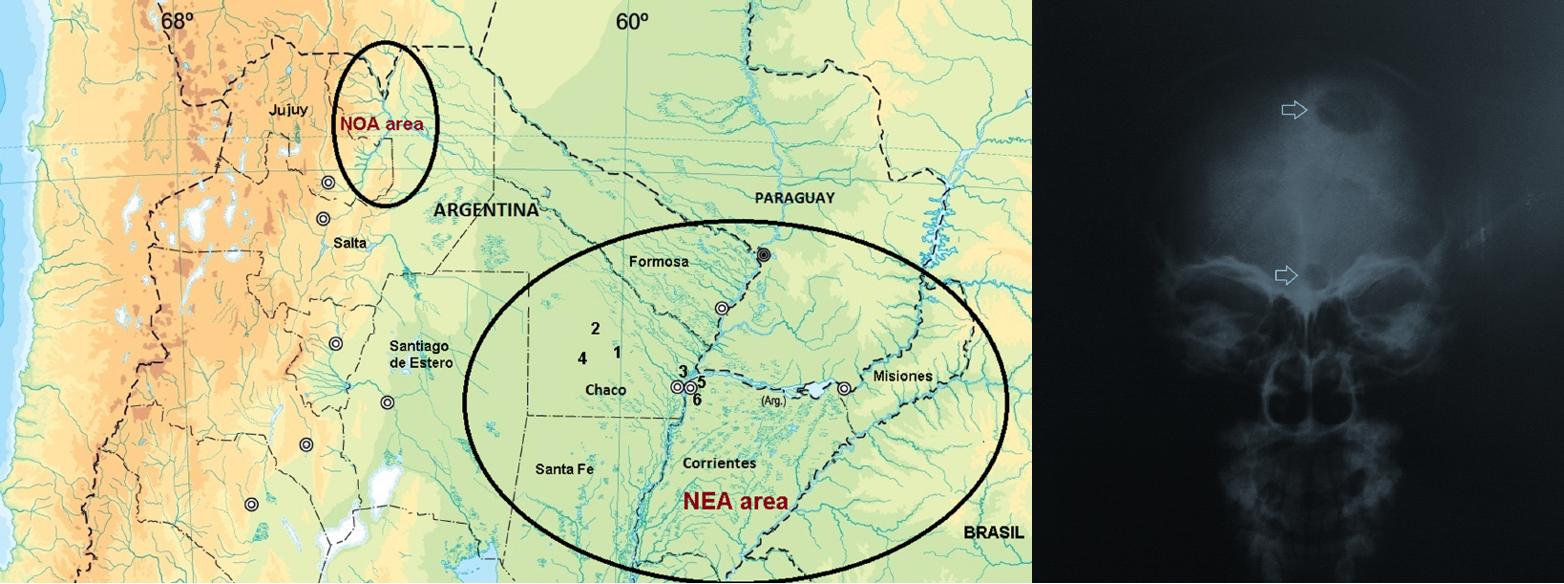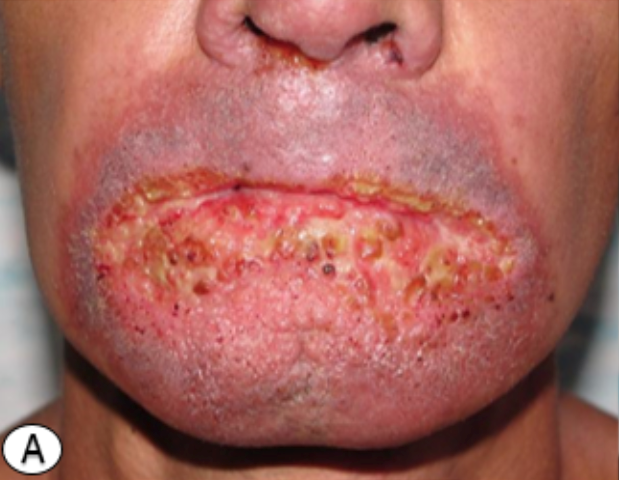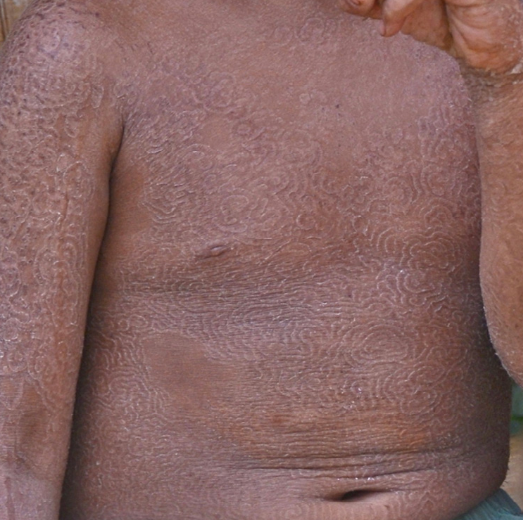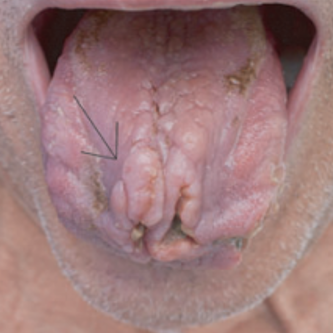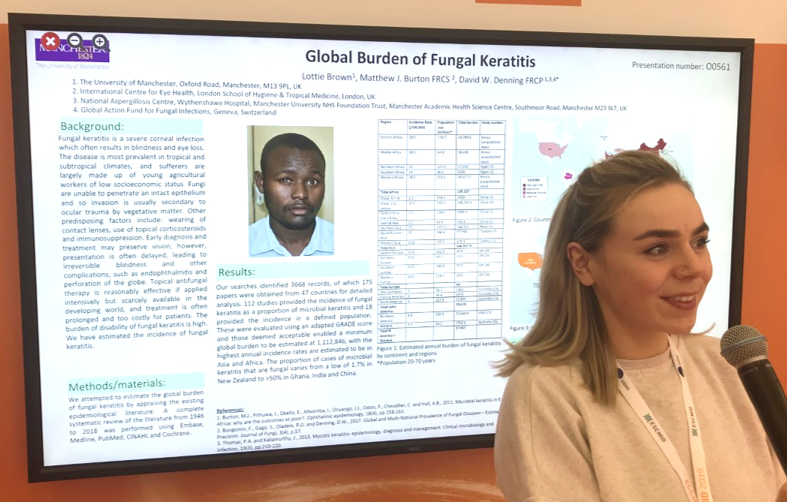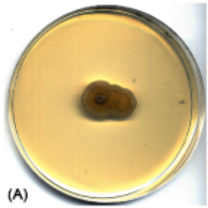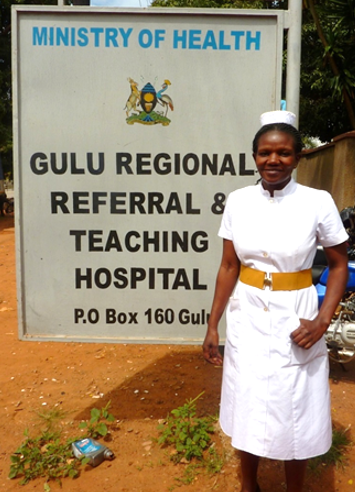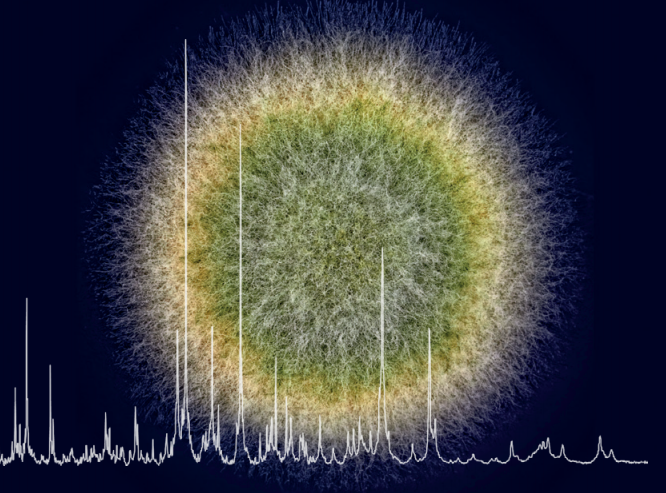Serious systemic paracoccidioidomycosis infections are often associated with men working in agriculture. Dr Guisano and colleagues describe a cluster of six cases in children in the NEA area of Argentina that occurred during the 1982-3 El Niño Southern Oscillation climatic anomaly, and suggest that climatic and anthropogenic changes may have played a role
Side effects of long-term azole therapy
Azole antifungals are the first-line of treatment or prophylaxis for many fungal infections. They are often administered long-term (weeks to months), which can be associated with a number of adverse effects.
Paracoccidioidomycosis in South America should be a Neglected Fungal Tropical Disease
Paracoccidioidomycosis (PCM) should be listed as a Neglected Tropical Disease (NTD) according to GAFFI.
Tiña imbricata: una micosis superficial rara
La tiña imbricata es una micosis superficial crónica causada por el hongo Trichophyton concentricum. Es endémica en América Central y del Sur, el Suroeste del Pacífico y el Sudeste Asiático, y afecta principalmente a las personas que viven en condiciones primitivas y en entornos aislados.Los pacientes suelen presentar una erupción concéntrica, con picazón, escamosa, que […]
Tinea imbricata: a rare superficial mycosis
Tinea imbricata is a chronic superficial mycosis caused by the fungus Trichophyton concentricum. A recent case report by Dr A Leung and colleagues describes a case of tinea imbricata in an 8 year old Malaysian boy.
Oropharyngeal histoplasmosis: a manifestation of disseminated disease
Histoplasmosis is a fungal infection endemic to areas of Central America and Midwest USA. Most people develop a mild form of infection and are asymptomatic; if symptoms do occur they are usually flu-like, but can vary greatly. In a few, usually immunosuppressed, patients the disease can progress to life-threatening, disseminated histoplasmosis. Dr Thais Pincelli and colleagues recently reviewed all 10 cases of oropharyngeal histoplasmosis identified over a 21 year period at the Mayo Clinic in Rochester, Minnesota.
ECCMID 2019 presentations: burden of fungal disease estimates for Namibia, Paraguay and Kyrgyzstan
This week a team from the University of Manchester, London School of Hygiene and Tropical Medicine and GAFFI presented work at ECCMID showing the burden of fungal disease estimates for Namibia, Paraguay and Kyrgyzstan, and that fungal keratitis leads to over 600,000 blind eyes annually
Neocucurbitaria keratinophila: an emerging opportunistic pathogen?
In a recent study on coelomycetous fungi from clinical origin, Dr Garcia-Hermoso and colleagues [1] identified eight N. keratinophila isolates from superficial mycosis cases in Spain.
1 in 15 TB sufferers go on to develop chronic pulmonary aspergillosis, treatment could save 1000s
A collaboration between scientists in Manchester and Uganda reveals that around 1 in 15 tuberculosis patients go on to develop chronic pulmonary aspergillosis (CPA), via cavities left by the tuberculosis. Prompt diagnosis and antifungal treatment has the potential to save many thousands of lives.
Comparison of three MALDI-ToF libraries (MSI, Bruker, NIH) for identification of filamentous fungi
MALDI-ToF mass spectrometry has proven useful in identifying bacteria in clinical samples, but the technology has lagged behind in its use for filamentous fungi. Dr Stein and colleagues in Canada compared three libraries (MSI, Bruker v1.0 and NIH) for their ability to identify clinical and reference strains.

